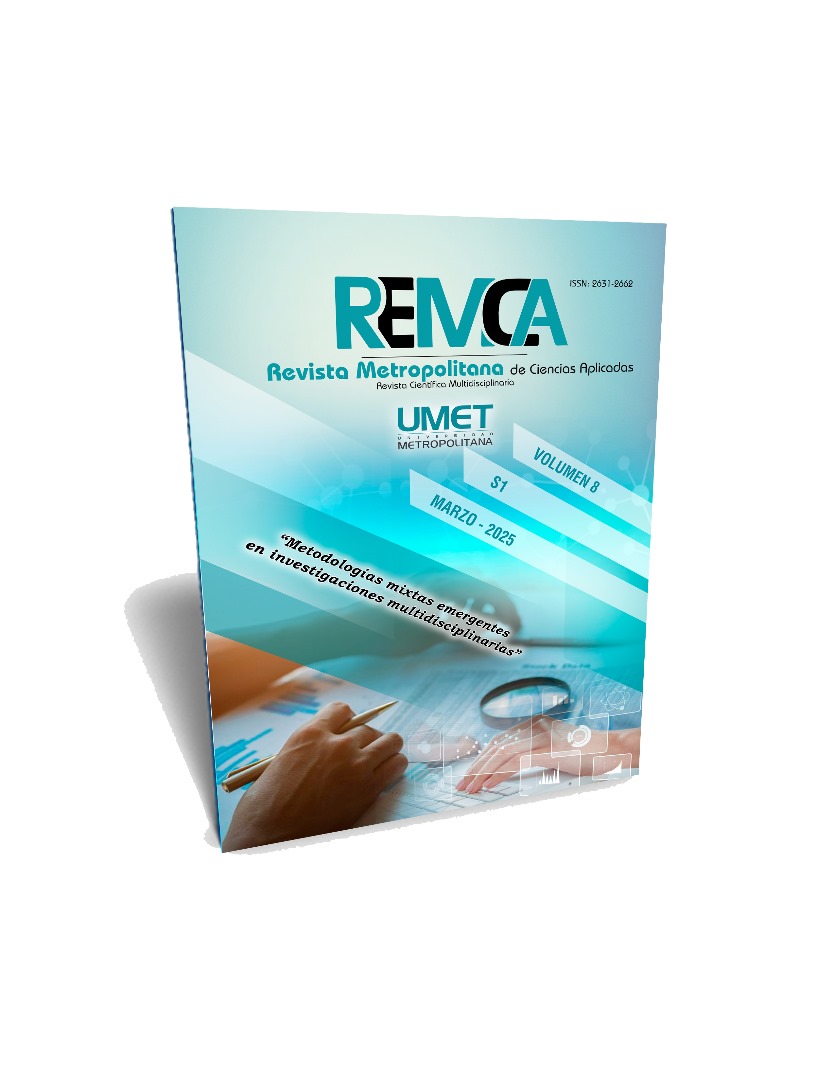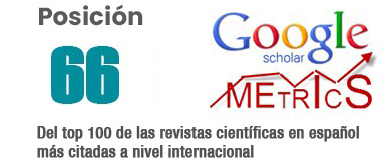Side effects of prolonged use of sedative medications in ICU patients: an integrative review
DOI:
https://doi.org/10.62452/fse49f04Keywords:
Sedative medications, adverse reactions, side effects, drug toxicity, intensive care unitAbstract
The use of prolonged sedation in the ICU can be associated with several adverse side effects, primarily caused by the administration of medications such as propofol, etomidate, and dexmedetomidine. Therefore, it is important to consider actions to prevent these effects. The objective of this article is to synthesize the available evidence on the side effects of prolonged use of sedative medications in ICU patients through an integrative review of the specialized literature. An integrative review was conducted. Specialized databases such as PubMed, Scopus, and VHL were used as information sources. A search strategy based on the PCC question, Mesh/DeCS terms, and Boolean operators was followed. Articles from the last 10 years were selected using the Rayyan QCRI® web platform, and a screening process was conducted, ultimately resulting in 17 articles. The PRISMA-ScR guideline, in its extension for integrative reviews, was used, following the checklist and guidelines established by this regulation. Among the selected studies, randomized controlled trials (RCTs), cohort studies, and case studies stand out. Regarding the regions, they were mostly concentrated in Asia and Europe, while only two from Latin America were considered: one from Argentina and one from Brazil. The results of the 17 articles describe adverse events due to the use of benzodiazepines, propofol, and dexmedetomidine, and also provide recommendations for drug combinations such as ketamine and midazolam. The evidence found demonstrates that prolonged use of sedatives causes side effects on the central nervous system, respiratory system, cardiovascular system, thermoregulation, and also has gastrointestinal effects. Therefore, nursing staff must be trained in this regard in order to effectively prevent and intervene in these cases.
Downloads
References
Aoki, Y., Kato, H., Fujimura, N., Susuki, Y., Sakuraya, M., & Doi, M. (2022). Effects of fentanyl administration in mechanically ventilated patients in the intensive care unit: a systematic review and meta-analysis. BMC Anesthesiol 22. https://doi.org/10.1186/s12871-022-01871-7
Boriosi, J. P., Eickhoff, J. C., Klein, K. B., & Hollman, G. A. (2017). A retrospective comparison of propofol alone to propofol in combination with dexmedetomidine for pediatric 3T MRI sedation. Paediatric anaesthesia, 27(1), 52–59. https://doi.org/10.1111/pan.13041
Carboni Bisso, I., Courtois, M. F., Bono, M., Huespe, I., Vecchio, G., Fernández Ceballos, I., Bongiorni, G., & Las Heras, M. (2024). Sedation with inhaled sevoflurane in the intensive care unit. Sedación inhalada con sevoflurano en la unidad de cuidados intensivos. Medicina, 84(4), 672–681.
Contreras, S., Gimenez, C., & Caballero, J. (2024). Abordaje práctico de la sedación inhalada en el paciente crítico. Medicina Intensiva, 48(8). https://doi.org/10.1016/j.medin.2024.04.007
Conway, A., Chang, K., Mafeld, S., & Sutherland, J. (2021). Midazolam for sedation before procedures in adults and children: a systematic review update. Systematic reviews, 10(1), 69. https://doi.org/10.1186/s13643-021-01617-5
De Bels, D., Bousbiat, I., Perriens, E., Blackman, S., & Honoré, P. M. (2023). Sedation for adult ICU patients: A narrative review including a retrospective study of our own data. Saudi journal of anaesthesia, 17(2), 223–235. https://doi.org/10.4103/sja.sja_905_22
Devlin, J., et al. (2018). Pandharipande PP, et al. Clinical Practice Guidelines for the Prevention and Management of Pain, Agitation/Sedation, Delirium, Immobility, and Sleep Disruption in Adult Patients in the ICU. Critic Care Medic, 14(9), 825-873. https://journals.lww.com/00003246-201809000-00029
Duprey, M., Dijkstra-Kersten, S., Zaal, I., Briesacher, B., Saczynski, J., & Griffith, J. (2021). Opioid Use Increases the Risk of Delirium in Critically Ill Adults Independently of Pain. Am J Respir Crit Care Med, 204(5), 566-572. https://www.atsjournals.org/doi/10.1164/rccm.202010-3794OC
Fadayomi, A. B., Ibala, R., Bilotta, F., Westover, M. B., & Akeju, O. (2018). A Systematic Review and Meta-Analysis Examining the Impact of Sleep Disturbance on Postoperative Delirium. Critical care medicine, 46(12), e1204–e1212. https://doi.org/10.1097/CCM.0000000000003400
Gao, X., Yang, X., Tang, Y., Fang, X., Yuan, Y., Qi, H., Li, R., Shu, H., Zou, X., & Shang, Y. (2024). Fospropofol disodium versus propofol for long-term sedation during invasive mechanical ventilation: A pilot randomized clinical trial. Journal of clinical anesthesia, 95, 111442. https://doi.org/10.1016/j.jclinane.2024.111442
Gürcan, H. S., Ülgey, A., Öz Gergin, Ö., Seçkin Pehlivan, S., & Yıldız, K. (2021). Investigation of the effects of propofol/ketamine versus propofol/fentanyl on nausea- vomiting administered for sedation in children undergoing magnetic resonance imaging: a prospective randomized double-blinded study. Turkish journal of medical sciences, 51(4), 2120–2126. https://doi.org/10.3906/sag-2009-98
Heidari, S.M., Habibzadeh, M., Honarmand, A., Nazemroaya, B., & Mousavi, S. A. (2024). Clinical Outcomes of Using Dexmedetomidine, ProDex and Popfol for Sedation during Mechanical Ventilation in Patients Hospitalized in the Intensive Care Unit: A Triple Blinded Clinical Trial. Archives of Anesthesiology and Critical Care, 10(1), 468-473. https://aacc.tums.ac.ir/index.php/aacc/article/view/920
Hoyos, N. (2022). Efectos secundarios de los fármacos sedantes. ¿Cómo detectarlos? ¿Cómo tratarlos? Neumomadrid.
Hu, Q., Liu, X., Wen, C., Li, D., & Lei, X. (2022). Remimazolam: An Updated Review of a New Sedative and Anaesthetic. Drug design, development and therapy, 16, 3957–3974. https://doi.org/10.2147/DDDT.S384155
Ibrahim, A., ElSharkawy, M., Abdelrahman, R., Hassan, A., Ibrahim Saad, M., Elzoughari, E., Ismail Alsayed, A., Abdelbadie, A., & Fattah Helal, R. (2024). Comparing the Sedative Effect of Dexmedetomidine and Propofol in Mechanically Ventilated Patients Using Salivary Alpha-Amylase. Anesth Pain Med, 14(5). https://brieflands.com/articles/aapm-149364
Ingebrigtson, M., & Miller, J. (2023). Adverse Hemodynamic Effects of Dexmedetomidine in Critically Ill Elderly Adults. J Pharm Pract, 36(6), 1319-23. https://journals.sagepub.com/doi/10.1177/08971900221110159
Joo, J., Yu, S., & Jung, H. (2022). Delayed Adverse Events after Procedural Sedation in Pediatric Patients with Hematologic Malignancies. Medicina, 58. https://doi.org/10.3390/medicina58091208
Lewis, K., et al. (2022). Dexmedetomidine vs other sedatives in critically ill mechanically ventilated adults: a systematic review and meta-analysis of randomized trials. Intensive Care Medicine, 48, 811-840. https://doi.org/10.1007/s00134-022-06712-2
López Pérez , G. P., Carrera Casa, M. D., Amancha Moyulema, G. L., Chicaiza Quilligana, Y. N., Guamán Tacuri, A. B., & Iza Arias, J. M. (2022). National analysis of applied sedation in critical care patients. Salud, Ciencia Y Tecnología, 2. https://doi.org/10.56294/saludcyt2022234
Mart, M., Roberson, S., Salas, B., Pandharipande, P., & Ely, W. (2021). Prevention and Management of Delirium in the Intensive Care Unit. Semin Respir Crit Care Med, 14(1), 112-126. http://www.thieme-connect.de/DOI/DOI?10.1055/s-0040-1710572
Møller, M. H., et al. (2022). Use of dexmedetomidine for sedation in mechanically ventilated adult ICU patients: a rapid practice guideline. Intensive care medicine, 48(7), 801–810. https://doi.org/10.1007/s00134-022-06660-x
Niazi, W., Majeed, K., Us Saqib, N., Maqsood, S., Zafar, A., & Ahsan, A. (2024). Comparing The Effects of Ketamine-Midazolam Combination and Propofol on Sedation-Related Adverse Events and Quality of Magnetic Resonance Imaging in Pediatric Patients. Pak Armed Forces Med, 74(4), 936-941. https://www.pafmj.org/PAFMJ/article/view/9283
Northam, K., & Phillips, K. (2024). Sedation in the ICU. Hardin CC, editor. NEJM Evid, 3(11), 89-96. https://evidence.nejm.org/doi/10.1056/EVIDra2300347
Organización Mundial de la Salud. (2019). World Health Organization Model List of Essential Medicines for Children. https://iris.who.int/bitstream/handle/10665/325772/WHO-MVP-EMP-IAU-2019.07-eng.pdf?sequence=1&utm_source
Organización Panamericana de la Salud. (2020). Lista de medicamentos esenciales para el manejo de pacientes que ingresan a unidades de cuidados intensivos con sospecha o diagnóstico confirmado de Covid-19. OPS. https://iris.paho.org/bitstream/handle/10665.2/52192/OPSHSSMTCOVID-19200019_spa.pdf?sequence=1&utm_source=
Rehman, T., & DeBoisblanc, B. P. (2014). Persistent fever in the ICU. Chest, 145(1), 158–165. https://doi.org/10.1378/chest.12-2843
Sahinovic, M., Struys, M., & Absalom, A. (2018). Absalom AR. Clinical Pharmacokinetics and Pharmacodynamics of Propofol. . Clin Pharmacokinet, 57(12), 1539-58. http://link.springer.com/10.1007/s40262-018-0672-3
Soler Bastos, A., Mariniliza, L., Da Silva, D., & Barbosa, T. (2020). Prevalence of delirium in intensive care patients and association with sedoanalgesia, severity and mortality. Revista Gaúcha de Enfermerem, (41). https://doi.org/10.1590/1983-1447.2020.20190068
Song, M. J., Jang, Y., Lee, J. H., Yoon, J. H., Kim, D. J., Jung, S. Y., & Lim, S. Y. (2023). Association of Dexmedetomidine With New-Onset Atrial Fibrillation in Patients With Critical Illness. JAMA network open, 6(4). https://doi.org/10.1001/jamanetworkopen.2023.9955
Soukup, J., Michel, P., Christel, A., Schittek, G. A., Wagner, N. M., & Kellner, P. (2023). Prolonged sedation with sevoflurane in comparison to intravenous sedation in critically ill patients - A randomized controlled trial. Journal of critical care, 74, 154251. https://doi.org/10.1016/j.jcrc.2022.154251
Straw, L. B., Dodson, C. R., & Schrift, D. S. (2018). Dexmedetomidine-induced fever and delirium: A case report. Journal of clinical pharmacy and therapeutics, 43(3), 430–433. https://doi.org/10.1111/jcpt.12680
Telletxea, S., Etxebarria, L., & Ortega, L. (2012). Fospropofol: un nuevo profármaco del propofol. Revista Española de Anestesiología y Reanimación, 59(9). https://www.sciencedirect.com/science/article/abs/pii/S0034935612002289
Tsunemitsu, T., Kataoka, Y., Matsumoto, M., Hashimoto, T., & Suzuki, T. (2021). Effect of enterally administered sleep-promoting medication on the intravenous sedative dose and its safety and cost profile in mechanically ventilated patients: A retrospective cohort study. PloS one, 16(12). https://doi.org/10.1371/journal.pone.0261305
Valk, B., & Struys, M. (2021). Etomidate and its Analogs: A Review of Pharmacokinetics and Pharmacodynamics. . Clin Pharmacokinet, 60(10), 1253-69. https://link.springer.com/10.1007/s40262-021-01038-6
Van Gelder, T. G., van Diem-Zaal, I. J., Dijkstra-Kersten, S. M. A., de Mul, N., Lalmohamed, A., & Slooter, A. J. C. (2024). The risk of delirium after sedation with propofol or midazolam in intensive care unit patients. British journal of clinical pharmacology, 90(6), 1471–1479. https://doi.org/10.1111/bcp.16031
Wang, H. C., Huang, C. J., Liao, S. F., & Lee, R. P. (2024). Effects of dexmedetomidine versus propofol on outcomes in critically ill patients with different sedation depths: a propensity score-weighted cohort study. Anaesthesia, critical care & pain medicine, 43(6), 101425. https://doi.org/10.1016/j.accpm.2024.101425
Yao, Z., Liao, Z., Li, G., Wang, L., Zhan, L., & Xia, W. (2023). Remimazolam tosylate's long-term sedative properties in ICU patients on mechanical ventilation: effectiveness and safety. European journal of medical research, 28(1), 452. https://doi.org/10.1186/s40001-023-01440-9
Yatabe, T., Yamashita, K., & Yokoyama, M. (2015). Drug fever caused by propofol in the intensive care unit. Journal of anesthesia, 29(5), 786–789. https://doi.org/10.1007/s00540-015-2007-y
Downloads
Published
Issue
Section
License
Copyright (c) 2025 Silvia Alexandra Chancusig-Quilumba, Ana Belén Bazantes-Ormaza, Angela María Quintero-de Contreras, José Ivo Contreras-Briceño (Autor/a)

This work is licensed under a Creative Commons Attribution-NonCommercial-ShareAlike 4.0 International License.
Authors who publish in Revista Metropolitana de Ciencias Aplicadas (REMCA), agree to the following terms:
1. Copyright
Authors retain unrestricted copyright to their work. Authors grant the journal the right of first publication. To this end, they assign the journal non-exclusive exploitation rights (reproduction, distribution, public communication, and transformation). Authors may enter into additional agreements for the non-exclusive distribution of the version of the work published in the journal, provided that acknowledgment of its initial publication in this journal is given.
© The authors.
2. License
The articles are published in the journal under the Creative Commons Attribution-NonCommercial-ShareAlike 4.0 International License (CC BY-NC-SA 4.0). The terms can be found at: https://creativecommons.org/licenses/by-nc-sa/4.0/deed.en
This license allows:
- Sharing: Copying and redistributing the material in any medium or format.
- Adapting: Remixing, transforming, and building upon the material.
Under the following terms:
- Attribution: You must give appropriate credit, provide a link to the license, and indicate if any changes were made. You may do this in any reasonable manner, but not in any way that suggests the licensor endorses or sponsors your use.
- NonCommercial: You may not use the material for commercial purposes.
- ShareAlike: If you remix, transform, or build upon the material, you must distribute your creation under the same license as the original work.
There are no additional restrictions. You may not apply legal terms or technological measures that legally restrict others from doing anything the license permits.




